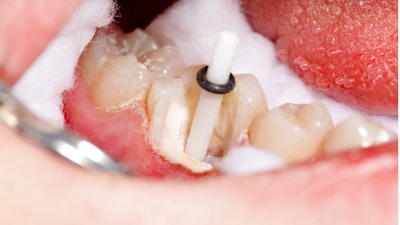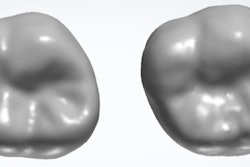
Post and core (PC) restorations were more likely to survive if the post space preparation did not extend beyond the middle third of a tooth but needed to be deep enough so that it was as long as the crown. The study was published in the Journal of Dentistry.
The study, which includes a large sample size and long follow-up periods, is believed to be the only clinical evaluation of the necessary depth of dental post space preparation in about 40 years, which was before advancements in post and core materials and adhesive techniques, the authors wrote.
“Against the background of the large sample size and the long follow-ups, the results of this retrospective survival analysis are suitable to give general recommendations regarding how long a post has to be in order to ensure the best survival probability for PC treatment,” Dr. Jonas Vogler of Justus Liebig University in Giessen, Germany, wrote (J Dent, February 7, 2024, Vol. 142, 104879).
Common treatment lacking current evidence
Though a post and core technique is a commonly used treatment option, there is a lack of recent research that reveals how deep the post space should be prepared. Currently, dental literature recommendations on the matter range from incorporating half of the root to preparing post spaces as deep as possible, which can raise the risk for root perforation, according to the study.
To widen the knowledge pool about this frequently used but inconsistently described treatment option, a retrospective study of more than 1,000 post and core restorations in 731 patients was conducted. There was a mean observation period of 4.65 years (standard deviation = 4.32 years), and an observation period of up to 19 years was conducted. X-rays were used to analyze the parameters post length and the postclinical crown ratio. Additionally, statistical analysis was assessed.
Survival until extraction or until the restoration separated from the tooth's structure was dramatically affected by bone attachment and the covering of a prosthetic restoration. Survival probabilities were significantly better when posts reached the middle third of the root than those that reached the coronal or apical third (p < 0.001; 95% confidence interval [CI]), the authors wrote.
Regarding the postclinical crown ratio, there was no significant difference when the post was equal to the crown or when the post was greater than the crown. However, a post measuring less than the crown showed significantly higher poor survival probabilities (p < 0.001; 95% CI), they wrote.
However, the study had limitations. The group sizes and matching observation periods were not evenly distributed among all pairwise comparisons, the authors wrote.
Other considerations
Despite these findings, dentists should thoroughly review post and core treatment in teeth with pathological bone attachment and teeth that are used as abutments for removable partial dentures due to the poor survival probabilities, they wrote.
“Therefore, the results are suitable to give general recommendations regarding how long a post has to be in order to ensure the best survival probability of PC treatment,” Vogler et al wrote.




















